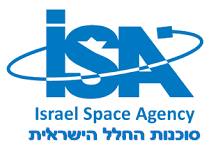Related Research Articles

The Defense Advanced Research Projects Agency (DARPA) is a research and development agency of the United States Department of Defense responsible for the development of emerging technologies for use by the military.

The history of the Internet has its origin in information theory and the efforts to build and interconnect computer networks that arose from research and development in the United States and involved international collaboration, particularly with researchers in the United Kingdom and France.
Spin-off may refer to:

Aerospace is a term used to collectively refer to the atmosphere and outer space. Aerospace activity is very diverse, with a multitude of commercial, industrial and military applications. Aerospace engineering consists of aeronautics and astronautics. Aerospace organizations research, design, manufacture, operate, or maintain aircraft and spacecraft.

Science and technology in the United States has a long history, producing many important figures and developments in the field. The United States of America came into being around the Age of Enlightenment, an era in Western philosophy in which writers and thinkers, rejecting the perceived superstitions of the past, instead chose to emphasize the intellectual, scientific and cultural life, centered upon the 18th century, in which reason was advocated as the primary source for legitimacy and authority. Enlightenment philosophers envisioned a "republic of science," where ideas would be exchanged freely and useful knowledge would improve the lot of all citizens.

Science and technology in China have developed rapidly during the 1980s to 2010s, and major scientific and technological achievements have been made since the 1980s. From the 1980s to the 1990s, the Chinese government successively launched the "863 Plan" and the "Strategy for Rejuvenating the Country through Science and Education", which greatly promoted the development and progress of China's science and technology. The Chinese government has placed emphasis through funding, reform, and societal status on science and technology as a fundamental part of the socio-economic development of the country as well as for national prestige. China has made rapid advances in areas such as education, infrastructure, high-tech manufacturing, academic publishing, patents, and commercial applications and is now in some areas and by some measures a world leader. China is now increasingly targeting indigenous innovation and aims to reform remaining weaknesses.
Technology transfer (TT), also called transfer of technology (TOT), is the process of transferring (disseminating) technology from the person or organization that owns or holds it to another person or organization, in an attempt to transform inventions and scientific outcomes into new products and services that benefit society. Technology transfer is closely related to knowledge transfer.

The Ansari X Prize was a space competition in which the X Prize Foundation offered a US$10,000,000 prize for the first non-government organization to launch a reusable crewed spacecraft into space twice within two weeks. It was modeled after early 20th-century aviation prizes, and aimed to spur development of low-cost spaceflight.
Science and technology in Israel is one of the country's most developed sectors. Israel spent 4.3% of its gross domestic product (GDP) on civil research and development in 2015, the highest ratio in the world. In 2019, Israel was ranked the world's fifth most innovative country by the Bloomberg Innovation Index. It ranks thirteenth in the world for scientific output as measured by the number of scientific publications per million citizens. In 2014, Israel's share of scientific articles published worldwide (0.9%) was much higher than its share of the global population (0.1%).
Draper Laboratory is an American non-profit research and development organization, headquartered in Cambridge, Massachusetts; its official name is The Charles Stark Draper Laboratory, Inc. The laboratory specializes in the design, development, and deployment of advanced technology solutions to problems in national security, space exploration, health care and energy.
As a federal agency, the National Aeronautics and Space Administration (NASA) receives its funding from the annual federal budget passed by the United States Congress. The following charts detail the amount of federal funding allotted to NASA each year over its history to pursue programs in aeronautics research, robotic spaceflight, technology development, and human space exploration programs.

Private spaceflight is spaceflight or the development of spaceflight technology that is conducted and paid for by an entity other than a government agency.
Bigelow Aerospace is an American aeronautics and outer space technology company which manufactures and develops expandable space station modules. Bigelow Aerospace was founded by Robert Bigelow in 1998, and is based in North Las Vegas, Nevada. It is funded in large part by the profit Bigelow gained through his ownership of the hotel chain, Budget Suites of America.
A corporate spin-off, also known as a spin-out, or starburst or hive-off, is a type of corporate action where a company "splits off" a section as a separate business or creates a second incarnation, even if the first is still active.

The Israel Space Agency is a governmental body, a part of Israel's Ministry of Science and Technology, that coordinates all Israeli space research programs with scientific and commercial goals.
The British space programme is the British government's work to develop British space capabilities. The objectives of the current civil programme are to "win sustainable economic growth, secure new scientific knowledge and provide benefits to all citizens."
NASA spinoff technologies are commercial products and services which have been developed with the help of NASA, through research and development contracts, such as Small Business Innovation Research (SBIR) or STTR awards, licensing of NASA patents, use of NASA facilities, technical assistance from NASA personnel, or data from NASA research. Information on new NASA technology that may be useful to industry is available in periodical and website form in "NASA Tech Briefs", while successful examples of commercialization are reported annually in the NASA publication "Spinoffs". The Spinoff publication has documented more than 2,000 technologies over time.

Vishay Intertechnology, Inc. is an American manufacturer of discrete semiconductors and passive electronic components founded by Polish-born businessman Felix Zandman. Vishay has manufacturing plants in Israel, Asia, Europe, and the Americas where it produces rectifiers, diodes, MOSFETs, optoelectronics, selected integrated circuits, resistors, capacitors, and inductors. Vishay Intertechnology revenues for 2021 were $3.24 billion. As of December 31, 2021, Vishay Intertechnology had approximately 22,800 full-time employees.
A research spin-off is a company that falls into at least one of the four following categories:
- Companies that have an Equity investment from a national library or university
- Companies that license technology from a public research institute or university
- Companies that consider a university or public sector employee to have been a founder
- Companies that have been established directly by a public research institution

As the space race came to an end, a new rationale for investment in space exploration emerged, focused on the pragmatic use of space for improving life on Earth. As the justification for government-funded space programs shifted to "the public good", space agencies began to articulate and measure the wider socio-economic benefits that might derive from their activities, including both the direct and indirect benefits of space exploration. However, such programs have also been criticized with several drawbacks cited.
References
- ↑ Jack Francis Williams; Robert John Stimson (2001). International Urban Planning Settings: Lessons of Success. Emerald Group Publishing. p. 426. ISBN 0-7623-0695-5.
- ↑ "Living Internet: Lawrence Roberts Manages The ARPANET Program". livinginternet.com. Retrieved 6 November 2008.
- ↑ ADAMS, GORDON (25 November 2013). "The future of the aerospace defense industry is not nearly as bad as the industry would have you believe". foreignpolicy.com. The Washington Post Company. Retrieved 26 November 2013.